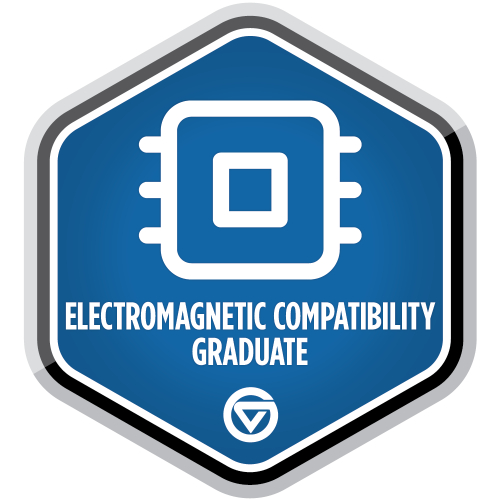Electromagnetic Compatibility
Undergraduate Badge
Grand Rapids • Face to face • 8 Credits

Undergraduate Badge
Grand Rapids • Face to face • 8 Credits
The undergraduate electromagnetic compatibility badge (EMC) certifies knowledge of electromagnetic fundamentals and EMC principles to design and test electronic products for EMC compliance.
Grand Valley offers an undergraduate badge in Electromagnetic Compatibility (EMC) that certifies knowledge of electromagnetic fundamentals and EMC principles. This program is designed for electrical or interdisciplinary engineering majors and focuses on designing and testing electronic products for EMC compliance. The badge requires prerequisites in physics and engineering courses.
The EMC badge program includes two main courses: EGR 343 - Applied Electromagnetics and EGR 443 - Electromagnetic Compatibility. These courses cover lecture, discussion, examinations, laboratory assignments, and a design project. Students must pass both courses with a grade of C or better to earn the badge.
Studying EMC at Grand Valley is beneficial because digital badges document the knowledge, skills, and competencies gained through various learning and professional development opportunities. These badges can be displayed on social media and resumes, highlighting marketable skills to potential employers. Completing the badge efficiently enhances education and specialization, making graduates more attractive in the job market.
A digital badge, or badge, is a record of achievement that recognizes a student's completion of a coherent and meaningful academic experience. GVSU offers both credit and non-credit bearing badges as digital credentials. Credit-bearing badges include anywhere from 0.5 to 15 academic credits and may include additional noncredit criteria. Credit-bearing badges are also posted to the academic transcript.
Admissions to complete a digital badge is open to both degree and nondegree seeking students. If you are not currently a Grand Valley student, start your application here.
For current GVSU students:

gvsu.edu/engineering
136 Kennedy Hall
(616) 331-6750
Apply electrical and electronic theory and related knowledge, usually under the direction of engineering staff, to design, build, repair, adjust, and modify electrical components, circuitry, controls, and machinery for subsequent evaluation and use by engineering staff in making engineering design decisions.
Top skills| Annual Earnings | Percentile |
|---|---|
| $ 44,223.15 | 10% |
| $ 51,064.86 | 25% |
| $ 68,991.91 | 50% |
| $ 82,645.26 | 75% |
| $102,145.73 | 90% |
Develop and execute software tests to identify software problems and their causes. Test system modifications to prepare for implementation. Document software and application defects using a bug tracking system and report defects to software or web developers. Create and maintain databases of known defects. May participate in software design reviews to provide input on functional requirements, operational characteristics, product designs, and schedules.
Top skills| Annual Earnings | Percentile |
|---|---|
| $ 57,572.70 | 10% |
| $ 74,726.49 | 25% |
| $ 98,185.89 | 50% |
| $118,439.52 | 75% |
| $133,817.63 | 90% |
Research, design, and develop computer and network software or specialized utility programs. Analyze user needs and develop software solutions, applying principles and techniques of computer science, engineering, and mathematical analysis. Update software or enhance existing software capabilities. May work with computer hardware engineers to integrate hardware and software systems, and develop specifications and performance requirements. May maintain databases within an application area, working individually or coordinating database development as part of a team.
Top skills| Annual Earnings | Percentile |
|---|---|
| $ 73,129.49 | 10% |
| $ 84,896.73 | 25% |
| $107,501.57 | 50% |
| $134,771.74 | 75% |
| $165,480.53 | 90% |
Research, design, develop, or test computer or computer-related equipment for commercial, industrial, military, or scientific use. May supervise the manufacturing and installation of computer or computer-related equipment and components.
Top skills| Annual Earnings | Percentile |
|---|---|
| $ 83,482.64 | 10% |
| $100,887.49 | 25% |
| $113,074.40 | 50% |
| $146,390.92 | 75% |
| $186,957.27 | 90% |